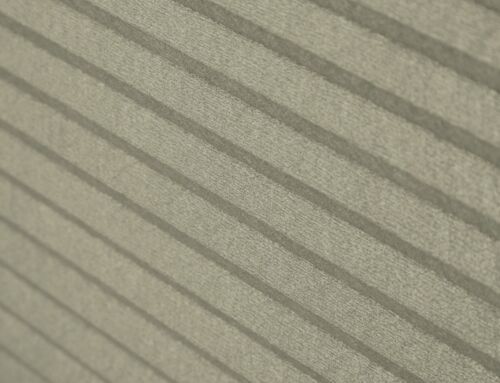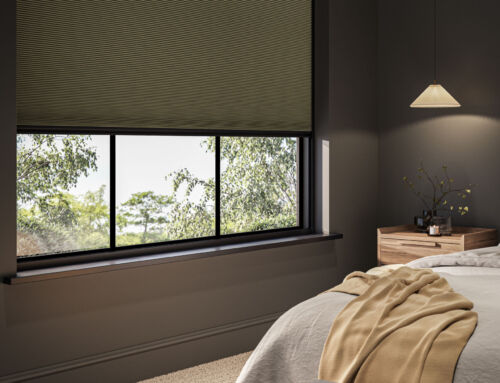As energy costs continue to rise and environmental concerns gain prominence, homeowners are seeking ways to improve their homes’ energy efficiency. One often-overlooked aspect of making a home more energy-efficient is upgrading window treatments, as they play a crucial role in maintaining indoor temperatures, reducing heating and cooling costs, and creating a comfortable living environment.
Window treatments such as blinds, curtains, and shutters contribute to the insulation of your home by reducing heat loss during the colder months and lessening heat gain during the warmer seasons. With countless window treatment options available, selecting the ones with excellent insulating properties can make a significant difference in your home’s energy efficiency and comfort.
This comprehensive guide will explore various insulating window treatment options, including cellular shades, thermal curtains, Roman blinds, and plantation shutters. We will discuss their unique characteristics, advantages, and disadvantages to help you make the best choice for your specific needs.
Evaluating energy efficiency factors, such as R-value, U-factor, proper fit, installation, and material types, will ensure you make informed decisions when selecting window treatments. Additionally, we will highlight other benefits of energy-efficient window treatments, including noise reduction, privacy enhancement, and light control.
Turn to experts like Shady Blinds for advice on selecting and installing insulating window treatments that cater to exceptional performance and energy efficiency. By investing in energy-efficient blinds, curtains, or shutters, you can create a comfortable, energy-saving, and eco-friendly home for your family in Nuneaton and Warwickshire.
The Role of Window Treatments in Maintaining Indoor Temperature and Reducing Energy Costs
Window treatments play a pivotal role in controlling heat transfer through your windows, impacting the energy efficiency of your home. In colder months, they minimise heat loss, reducing the need for heating. Conversely, in warmer months, they shield your home from excess heat gain, decreasing reliance on air conditioning. By choosing the right insulating window treatments, homeowners can enjoy comfortable living spaces while reducing their energy consumption and saving on utility bills.
Insulating Properties of Different Window Treatment Options
Let’s explore the insulating properties of various window treatment options, including cellular shades, thermal curtains, Roman blinds, and plantation shutters:
Cellular Shades
Cellular shades, also known as honeycomb shades, are designed with a unique structure that creates air pockets between multiple layers of fabric. These pockets trap air, providing excellent insulation and preventing heat transfer through your windows.
Advantages:
– Efficient insulation performance
– Blackout and light-filtering options available
– Wide range of colours and styles
Disadvantages:
– Limited aesthetic appeal compared to curtains or Roman blinds
– May not suit traditional room designs
Thermal Curtains
These curtains comprise specific thermal lining materials that insulate your windows effectively. Additionally, they offer a stylish and sophisticated look, making them an attractive option for homeowners who value aesthetics and energy efficiency.
Advantages:
– Excellent insulation against heat and cold
– Available in various styles, colours, and patterns
– Double-duty insulating and decorative functionality
Disadvantages:
– Quality and efficacy can vary depending on the fabric or lining choice
– May need regular maintenance to ensure optimal performance
Roman Blinds
Roman blinds are an elegant window treatment solution that can be designed with thermal lining materials, insulating your home effectively. They are versatile and customisable, fitting seamlessly into any room design or décor theme.
Advantages:
– Aesthetically versatile with numerous fabrics and styles
– Option to add a thermal lining for insulation
– Customisable design to fit your room’s aesthetic
Disadvantages:
– May not provide as much insulation as cellular shades or thermal curtains
– Limited options for light control, depending on fabric choice
Plantation Shutters
Plantation shutters are a timeless addition to any home and provide natural insulation due to their solid structure and adjustable louvres. The installation of these shutters is seamless, and they effectively minimise heat transfer, resulting in enhanced energy efficiency.
Advantages:
– Beautiful, durable, and long-lasting
– Natural insulation through solid wood or composite materials
– Precise light control and privacy
Disadvantages:
– Often more expensive than other window treatment options
– May require professional installation for optimal fit and performance
Evaluating Energy Efficiency Factors When Selecting Window Treatments
When choosing window treatments, it’s crucial to consider energy efficiency factors to ensure you invest in an effective solution for your home. Consider these factors when evaluating your options:
R-Value and U-Factor
The R-value represents a window treatment’s resistance to heat flow, while the U-factor measures heat transfer. Higher R-values and lower U-factors indicate better insulation. Be aware of these ratings when selecting window treatments to make informed decisions.
Proper Fit and Installation
Precise window measurements and professional installation are key to ensuring your chosen window treatments perform efficiently. An improper fit or poorly installed treatment can significantly reduce insulating properties, highlighting the importance of turning to professionals for guidance and installation.
Material and Fabric Types
Different materials and fabrics impact a window treatment’s insulating properties. Research various options, considering factors such as heat retention, sunlight protection, and aesthetics before making your final decision.
Additional Benefits of Energy-Efficient Window Treatments
Beyond their energy-saving capabilities, insulating window treatments offer numerous benefits:
– Noise Reduction: Many insulating window treatments help dampen exterior noise, creating a tranquil indoor environment.
– Privacy Enhancement: Effective window treatments offer enhanced privacy by restricting the view into your home, which is particularly important in busy neighbourhoods.
– Light Control: Energy-efficient window treatments often boast light-blocking capabilities, creating a restful atmosphere and protecting your furnishings from sun damage.
Conclusion: Investing in Insulating Window Treatments for a Comfortable, Energy-Efficient, and Eco-friendly Home
Energy-efficient window treatments are a vital element of a comfortable, eco-friendly, and cost-saving home. By exploring various options and understanding the factors that contribute to energy efficiency, you can make informed decisions about the best blinds, curtains, or shutters for your property in Nuneaton and Warwickshire.
Turn to Shady Blinds for expert advice, superior products and seamless blinds installation, ensuring you receive top-quality, energy-efficient window treatments catering to your unique preferences and requirements. A comfortable, energy-saving, and eco-friendly home is within reach, all starting with the right insulating window treatments.






Leave A Comment